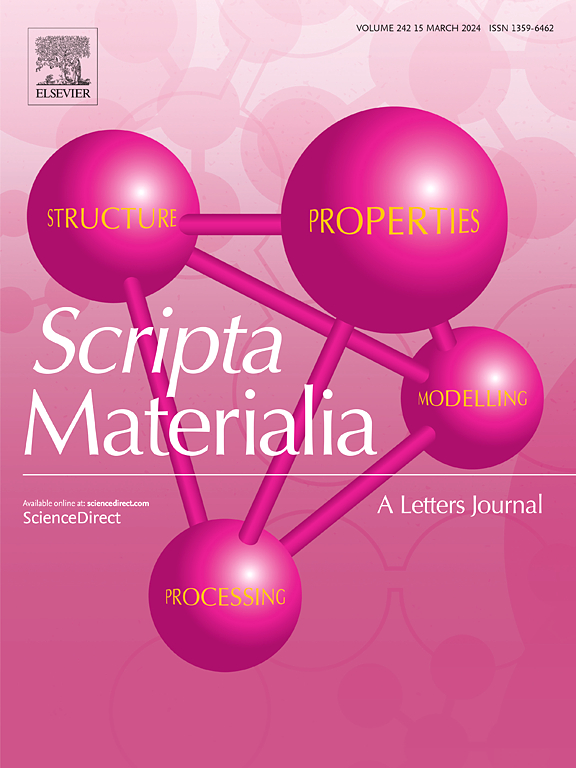〈a〉 screw dislocation triggered {101¯1} twinning in magnesium
IF 5.6
2区 材料科学
Q2 MATERIALS SCIENCE, MULTIDISCIPLINARY
引用次数: 0
Abstract
Twin nucleation in hexagonal metals is generally described by successive nucleation and gliding of twinning dislocations/disconnections (TDs). Unusual nucleation mechanisms, such as pure-shuffle mechanism for twins and kinking mechanism for twins, had been proposed based on experimental observations and atomistic simulations. Here, we reported screw dislocation enabled twinning mechanisms in magnesium based on atomistic simulations. A screw dislocation can have a planar spread core on basal plane or develop into a twin embryo via a cross-slip mechanism. The cross-slip enabled twinning mechanism is favored when the basal slip is constrained or suppressed at a high strain condition. This mechanism addresses the experimental puzzle of the twin absence under c-axis compression.

<一个>螺钉位错触发了镁中的{101¯1}孪晶
六方金属的孪晶成核通常用孪晶位错/断裂(TDs)的连续成核和滑动来描述。根据实验观察和原子模拟,提出了不寻常的核机制,如{101¯2}双胞胎的纯shuffle机制和{112¯1}双胞胎的扭结机制。在这里,我们报道了基于原子模拟的螺位错使镁中的{101¯1}孪生机制。< A >螺位错可在基面上形成平面展心或通过交叉滑移机制发展成{101¯1}双胚。当基底滑移在高应变条件下受到约束或抑制时,交叉滑移使{101¯1}孪生机制得到青睐。该机制解决了c轴压缩下{101¯1}孪晶缺失的实验难题。
本文章由计算机程序翻译,如有差异,请以英文原文为准。
求助全文
约1分钟内获得全文
求助全文
来源期刊

Scripta Materialia
工程技术-材料科学:综合
CiteScore
11.40
自引率
5.00%
发文量
581
审稿时长
34 days
期刊介绍:
Scripta Materialia is a LETTERS journal of Acta Materialia, providing a forum for the rapid publication of short communications on the relationship between the structure and the properties of inorganic materials. The emphasis is on originality rather than incremental research. Short reports on the development of materials with novel or substantially improved properties are also welcomed. Emphasis is on either the functional or mechanical behavior of metals, ceramics and semiconductors at all length scales.
 求助内容:
求助内容: 应助结果提醒方式:
应助结果提醒方式:


